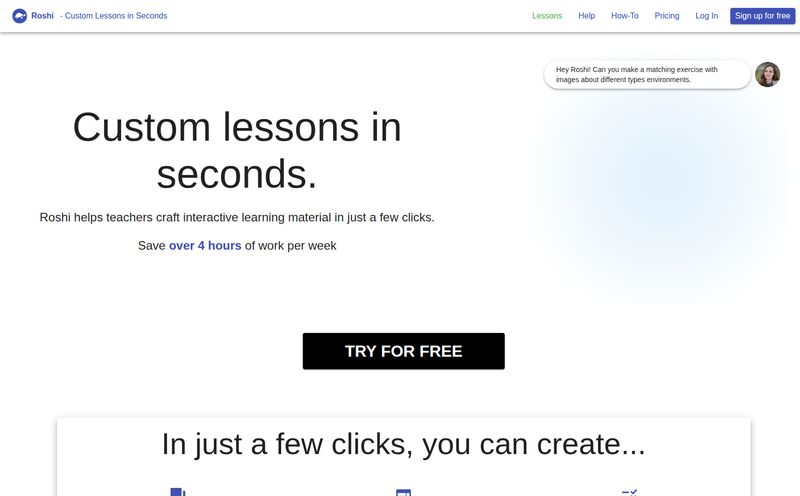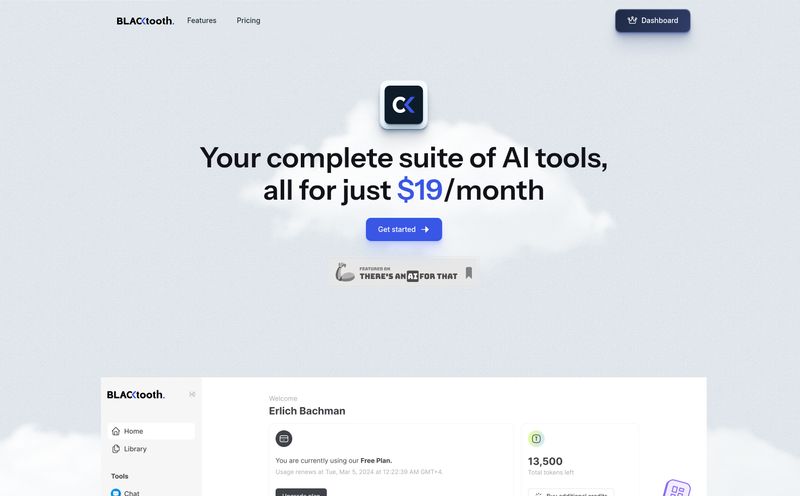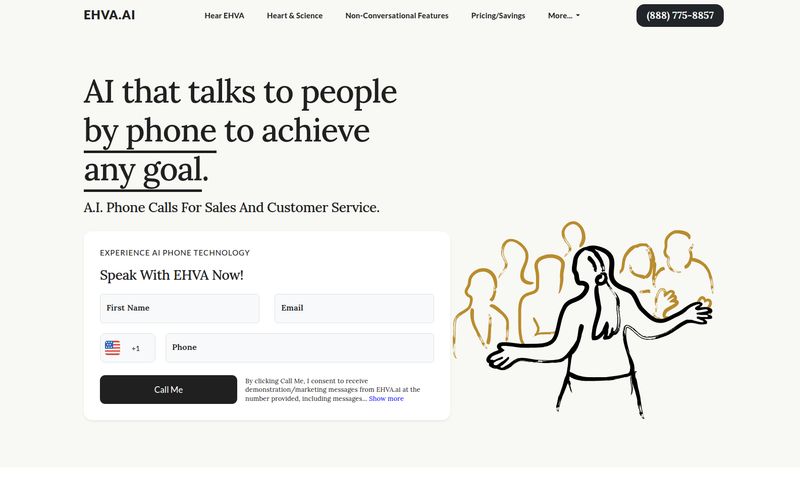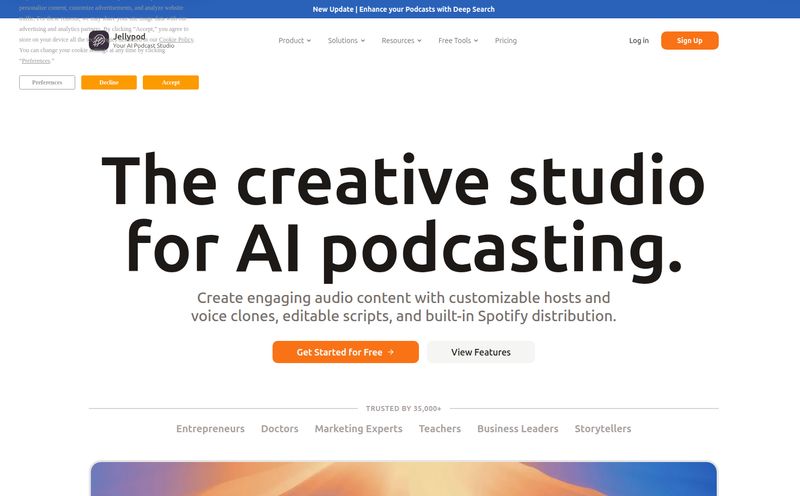For years, the term “text-to-speech” has been a bit of a running joke in the content creation world. We've all heard it. That monotone, clunky, robotic voice that sounds like a satnav that's had a really, really bad day. You know the one. You’d use it for a placeholder track, maybe a quick internal demo, but you'd never dream of putting it in a client-facing video or a public podcast. It just screamed… cheap.
I’ve spent more hours than I care to admit scrolling through freelance sites, listening to countless voice actor demos, trying to find that perfect fit for a project. It’s a grind. It costs time, it costs money, and sometimes, you still don’t get exactly what you wanted. So, when I keep hearing the buzz about AI voices getting “scarily good,” my inner skeptic just rolls its eyes. But every now and then, a tool comes along that makes me sit up and pay attention. This time, that tool is AudioBot.
I stumbled upon it while looking for a very specific need: a high-quality Spanish voiceover with a genuine Mexican accent for a campaign. Not just generic “Spanish,” but the real deal. And that, my friends, is where I fell down the AudioBot rabbit hole.
So, What is AudioBot Anyway?
At its core, AudioBot is an AI-powered text-to-speech (TTS) platform. You type in text, you choose a voice, and it spits out an audio file. Simple enough. But that description is like saying a Ferrari is just “a way to get around.” The difference is in the execution.
AudioBot doesn’t just generate audio; it aims to create natural, professional-sounding voiceovers. It boasts over 500 different voices, but its claim to fame, and what really hooked me, is its focus on local accents. We're talking about a platform that understands the difference between Spanish spoken in Madrid versus Mexico City, or Bogota versus Buenos Aires. For anyone in marketing or content creation targeting specific regions, this is an absolute game-changer.
The Magic is in the Accent (Seriously)
Most TTS services offer a handful of languages. You might get 'English (US)', 'English (UK)', and if you're lucky, 'Spanish'. But AudioBot takes a completely different road. It specializes in nailing the nuances of dialects, especially within the Spanish-speaking world.
Think about it. If you're running an ad campaign in Colombia, using a voice with a thick Castilian accent from Spain is going to feel jarring and inauthentic. It breaks the connection with the audience. AudioBot gets this. They offer distinct voices for over 14 countries, which means you can create content that genuinely connects with your target audience on a local level.
“It’s like having a team of native-speaking voice actors from around the world on standby, ready to go at a moment’s notice. The level of localization this allows is just fantastic.”
This isn't just about sounding correct; it's about building trust and rapport. It shows you’ve done your homework and you actually care about the specific market you're talking to.
">
A Look Under the Hood at AudioBot's Features
Okay, so the accents are cool. But what else makes it stand out from the ever-growing crowd of AI tools?
More Than Just a Robot Voice
The quality of the voices is pretty remarkable. They call them “neuronal voices,” which is the fancy industry term for AI that uses deep learning to mimic human speech patterns, intonation, and rhythm. The result is a voice that has emotion and flow. You can adjust the tone and speed, finding the perfect delivery for everything from an upbeat YouTube video to a more serious e-learning module. They aren't all perfect, a few can sound a bit similar, but the top-tier ones are some of the best I've heard.
You Own It, All of It
This is the big one for me, and for any professional. With AudioBot, when you generate an audio file, you get full copyright and intellectual property ownership. You can use it for commercial projects, broadcast, social media, anything. No weird licensing agreements, no royalties, no strings attached. Many other platforms have restrictive terms that can be a legal minefield for businesses. AudioBot’s approach is clean and simple, which gives me incredible peace of mind.
An Interface a Human Can Actually Use
The platform is refreshingly straightforward. The dashboard is clean, you pick your language/accent, pick your voice (you can preview them all), paste your text, and hit “Escuchar” (Listen). A few seconds later, your audio is ready to download as a high-quality MP3. There's no steep learning curve or confusing settings to wrestle with. It just works.
">
Let's Talk Money: AudioBot's Pricing Explained
Pricing is often where these cool new tools lose me. I've seen some SaaS pricing that would make a Fortune 500 CFO blush. AudioBot, thankfully, is pretty reasonable and offers two flexible models.
You can either get a one-time character pack or a monthly subscription. The one-time packs are great for specific projects. You buy a block of characters, and they never expire. The monthly plans are better for ongoing content creators.
To give you an idea, here’s a quick look at some of their one-time payment plans (prices can vary by region, so check their site for your currency):
| Plan | Character Count | Example Price (EUR) |
|---|---|---|
| Esencial | 50,000 | ~€5 |
| Básico | 300,000 | ~€25 |
| Profesional | 1,000,000 | ~€68 |
| Elite | 3,000,000 | ~€126 |
For just €5, you can generate about 7,000-8,000 words of audio, which is more than enough for several short videos or a decent-length podcast episode. Compared to hiring a voice actor, the cost savings are massive.
The Not-So-Perfect Bits
Look, no tool is perfect. While I’m obviously impressed, there are a couple of things to keep in mind. First, you're working with character limits. You need to be mindful of how much you're generating, especially on the smaller plans. Second, while most voices are excellent, the quality can vary slightly from one to another. It's always worth previewing a few to find the one that best fits your script. Finally, it’s still AI. For projects that require the deep, nuanced performance of a seasoned actor—say, for a dramatic audiobook—you might still want to hire a human. But for 95% of marketing and content needs? This is more than powerful enough.
">
My Final Take on AudioBot
I went in skeptical and came out a believer. AudioBot has managed to solve some of the biggest headaches in digital content production. It’s fast, it’s cost-effective, and the focus on authentic local accents is something the competition should be very nervous about. The full copyright ownership is the cherry on top, making it a truly professional-grade tool.
If you're a YouTuber, podcaster, marketer, or course creator, I genuinely think you should give it a try. It might just change the way you think about audio production forever.
Frequently Asked Questions about AudioBot
- Can I really use the audio for commercial projects?
- Yes, absolutely. AudioBot grants you 100% of the intellectual property rights for any audio you create on a paid plan. You can use it in ads, for-profit videos, and any other commercial application without worrying about royalties or licensing fees.
- What languages and accents are available?
- AudioBot's main strength is its variety of Spanish accents from over 14 countries, including Mexico, Spain, Colombia, Argentina, and more. It also offers voices in other languages like English, Portuguese, and French, with a growing library.
- Is there a free trial?
- While they don't have a traditional free trial, their 'Esencial' plan is extremely affordable (around $5 USD or €5), allowing you to generate a substantial amount of audio to test the service thoroughly without a big commitment. You can also preview all the voices on their homepage for free.
- How do the character limits work?
- Every letter, number, space, and punctuation mark you type into the generator counts as one character. The one-time payment plans give you a total character balance that never expires. Monthly plans give you a character allowance that resets each month.
- Can I download the audio files?
- Yes. Once your audio is generated, you can instantly download it as a high-quality MP3 file, ready to be used in your video editor, podcast software, or any other application.
- How realistic are the AI voices?
- They are surprisingly realistic. By using advanced neuronal AI, the voices have natural-sounding intonation and flow. While a trained ear might still detect it's AI, it's a world away from the robotic voices of the past and is more than suitable for professional use cases.
Conclusion
In a sea of AI tools that all promise to change the world, AudioBot stands out by doing something practical and doing it exceptionally well. It's a tool built with a clear understanding of what content creators and marketers actually need: quality, authenticity, speed, and simplicity. It has certainly earned a permanent spot in my digital toolkit, and I have a feeling that once you hear it, it'll find a place in yours too.



